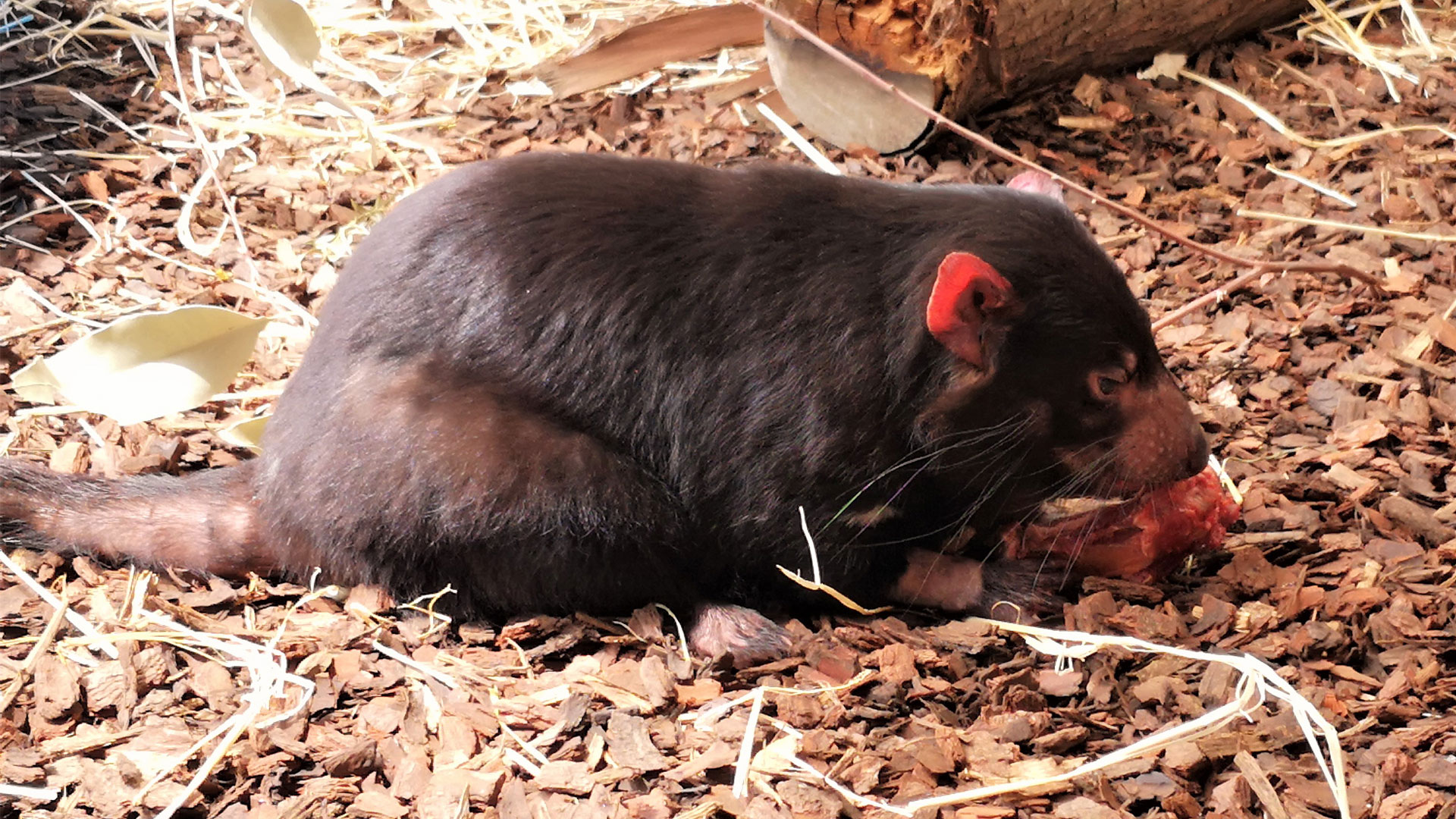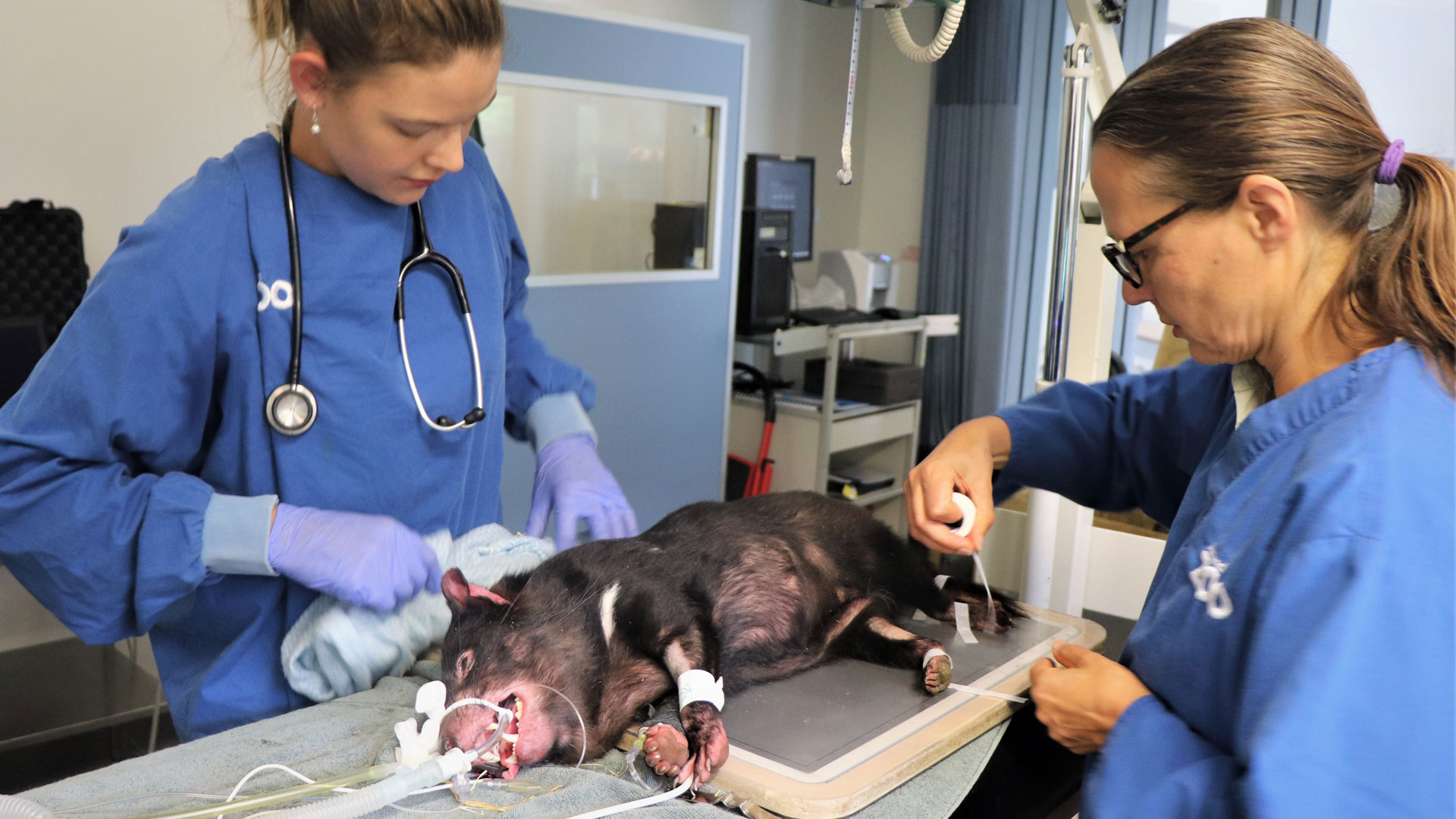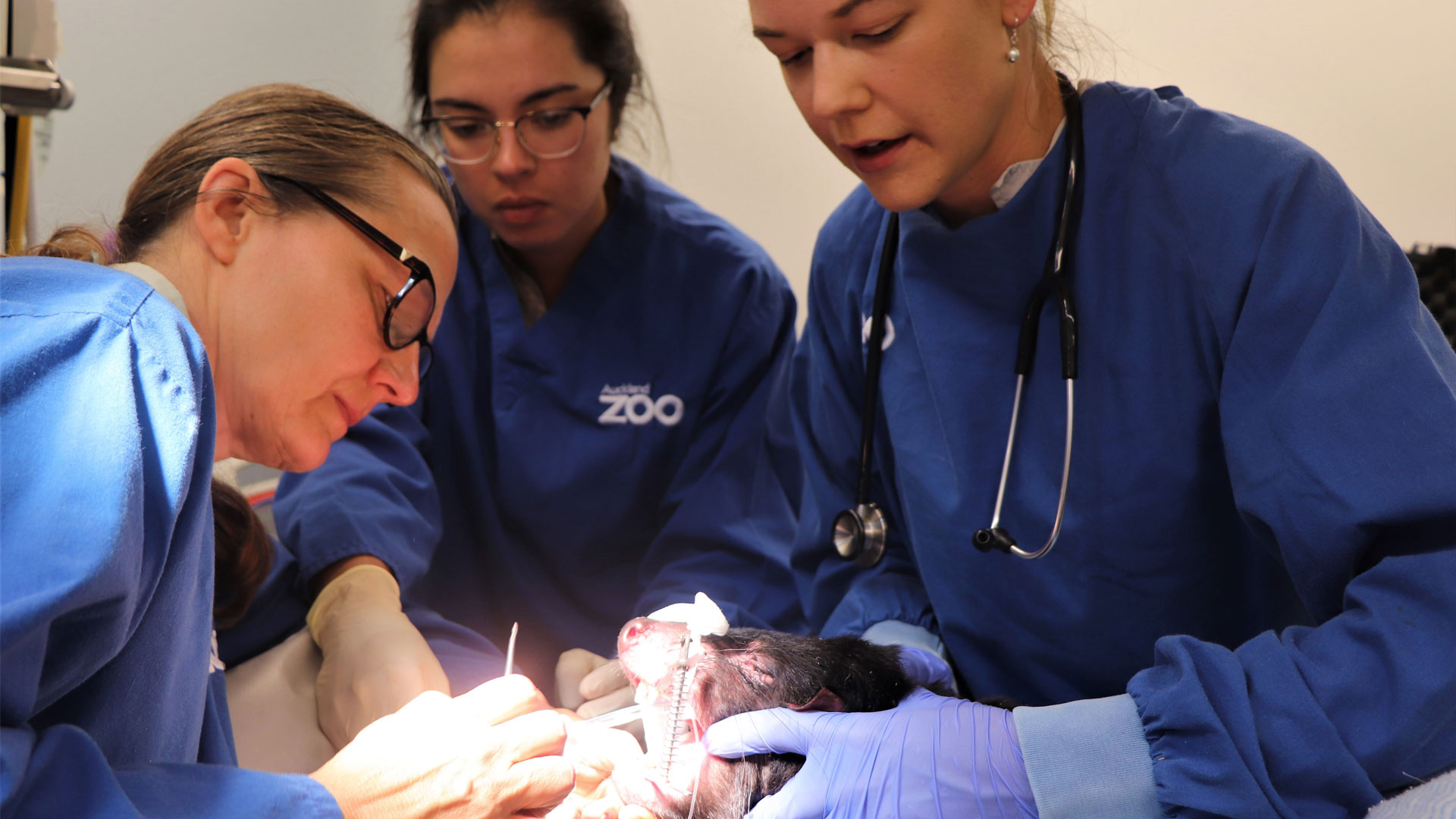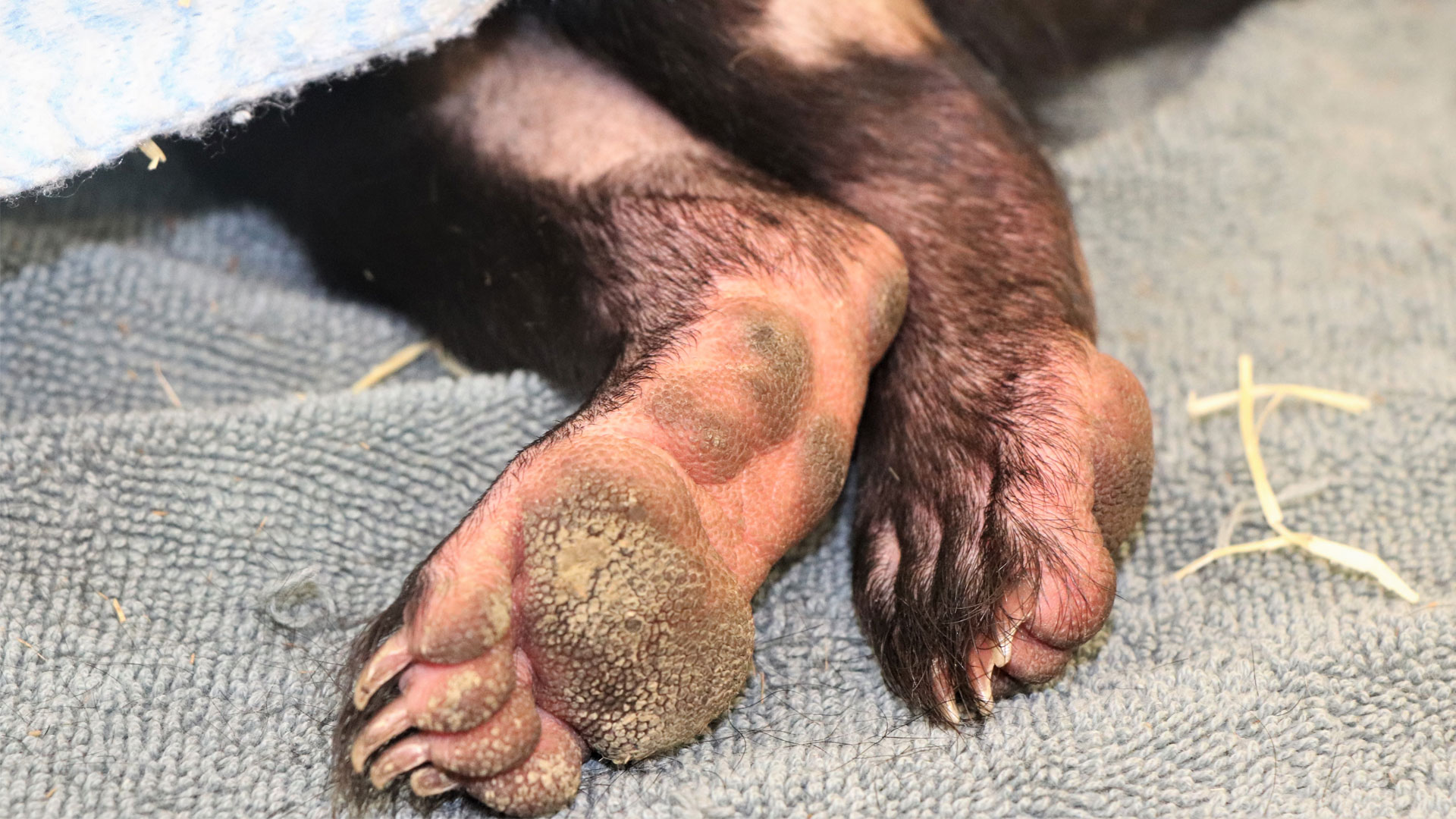Tasmanian devil Dash is just a week away from completing her quarantine and moving to our Australia Bush Track habitat – also home to our elderly male devil Smiley, and recently received a full health check-up.
While a little on the “chunky” side and with one blood test still pending, our vet team say Dash, who relocated from our friends at Welllington Zoo in late January, looks to be in great health.
Carnivore keeper Nick, the Zoo’s devil expert and a passionate advocate for this unique Aussie species (the world’s largest carnivorous marsupial!) says partly contributing to Dash being on the heavier side right now is the fact that she’s in oestrus.









